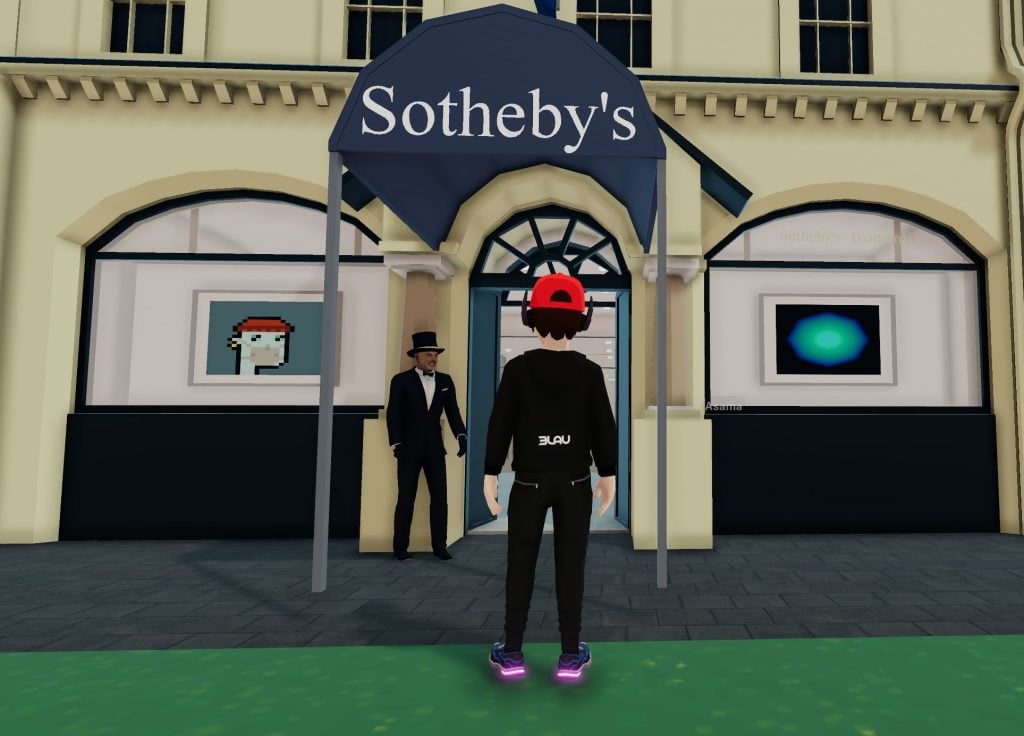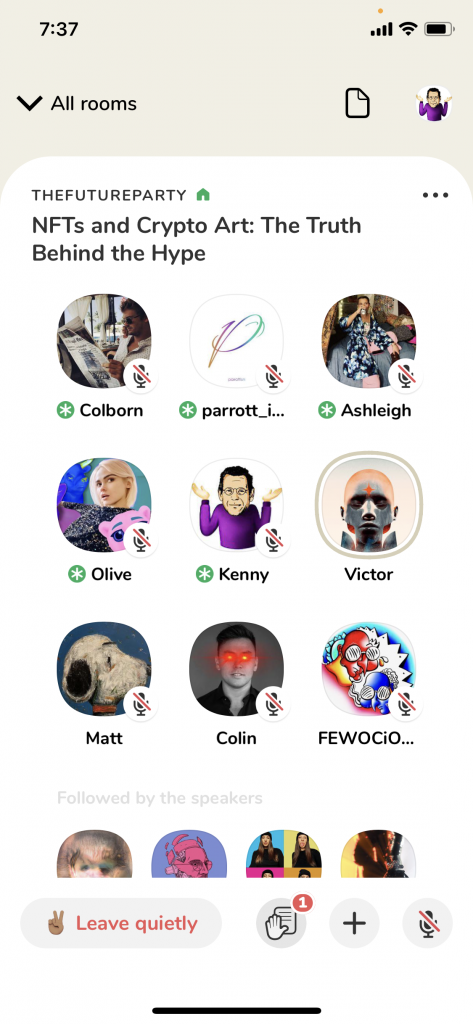Art World
6 Art Jobs, Trends, and Terms That Were the Buzzwords of the Past Year—But Would Have Made Absolutely Zero Sense Back in 2019
NFTs, OVRs, and immersive art, oh my!

NFTs, OVRs, and immersive art, oh my!

Katie White

The art world has undergone a real before and after over the past few years, seemingly trading Modernism for the metaverse, and NDAs for NFTs and DAOs. Its transformation from a dusty, quill-and-ink field into a tech-driven industry was accelerated at warp speed by the lockdown, as art fairs, galleries, and museums scrambled to pivot into the digital realm.
While many of us (including the author of the present article) are still sorting our blockchain from our bitcoin, these shifts seem to be only the beginning of longer-lasting transformations as whole new departments are being introduced to the art world’s most hallowed halls.
As we prepare for the New Year, we’ve spent some time reflecting on just how much our industry has changed. So we decided to put together a non-exhaustive, and in fact pretty arbitrary, list of jobs and terms that, well, would have mystified us way back in 2019.
Cheers to 2022—we’re watching out for whatever new world is coming our way!

One of B’s uber-rare CryptoPunk Apes, which marks her as an OG player in the NFT space.
NFTs are the belle of the 2021 ball. While the digital art form definitely existed way back in 2019, for the art world at large the medium wasn’t even a sparkle in an auctioneer’s eyes. In May of 2021, we awoke to a brand new reality when Beeple’s Everydays – The First 5000 Days sold at Christie’s for a jaw-dropping $69 million, making him the third most expensive living artist at auction. That auction, which was Christie’s first NFT sale, was orchestrated by head of digital art Noah Davis—formerly a mere contemporary art specialist. With the success of the sale, a glut of NFT specialist positions materialized. Our favorite job listing so far has been for an NFT coordinator at Phillips, which stated: “An interest or familiarity with digital art and/or NFTs would be ideal, but not necessary.” Our application is ready.

Welcome to the metaverse. Courtesy of Sotheby’s Twitter.
Where should we be buying, selling, and displaying our NFTs but in the metaverse, of course? While the metaverse was both a discussed conceptual idea in the art world—the Met hosted project devoted to metaverses way back in 2015—the idea that auctions would be hosted entirely in the digital sphere… well, huh, and what? But the metaverse is now very much part of our reality, with auctions taking place on the interactive platform Decentraland (stay with me). Sotheby’s, which has a replica of its London auction house in Decentraland, recently posted a job opening for a metaverse coordinator. While the title seems a bit Brave-New-World-y, the position actually seems to cover many of the nuts and bolts of old fashioned pre and post-sale logistics.

Art Basel 2021. © Art Basel
Visitors to Art Basel this year may have noticed fair attendants walking around with selfie sticks. At first glance, they might appear to be influencers on the go, but these intrepid souls are the fair’s new Show Experience Assistants. This recently introduced position is essentially a remote docent who facilitates personalized tours for collectors who aren’t able to make the trip IRL. “It is a bespoke 1:1 service. The Show Experience Assistant arranges a zoom, or other communication channel depending on the VIP, and helps them view specific works and discover artists and presentations, as well as facilitate introductions to specific galleries,” a spokesperson for Art Basel told the Art Newspaper.

Cecily Brown, Figures in a Landscape 1 (2001). In Gagosian’s Frieze New York 2020 Online Viewing Room. Artwork © Cecily Brown. Courtesy Gagosian.
The shorthand for “Online Viewing Room” surged in popularity in 2020 as the gamut of galleries adopted digital technologies in efforts to connect with collectors no longer able to travel to their brick and mortar spaces. What merits the title of an “Online Viewing Room” is still up for debate, with everything from a stream of installation images to interactive, navigable experiences claiming the title. While OVR gets thrown around with fancy-free ease now, back in 2019 we would have been hard-pressed to tell you what it meant. In fact, it seems in the wider-world OVR is more likely to mean Olfactory Virtual Reality, Office of Vocational Rehabilitation, or even Office of Veterinary Resources.

Installation view of “Frida: La Experiencia Immersiva.” Photo by Claudio Cruz/AFP via Getty Images.
Can we really even imagine a world before Immersive Van Gogh? While it may seem counterintuitive, yes, in the age of a pandemic, the most sought-after cultural experience became crowds of people wandering through a space lit up with projections of the Dutch artist’s sunflowers and stars. The people want what they want, and if that’s a whirlwind of colorful imagery, can we really blame them? While immersive art experiences certainly existed in 2019 (some of these shows have been touring for years), if someone had told us that Immersive Van Gogh would outstrip Taylor Swift’s ticket sales… we would have been baffled. Frida Kahlo, Michelangelo, even Fernando Botero have gotten the same treatment. Immersive Botero? I would have guessed there was a bathtub.

Courtesy of Kenny Schachter.
In 2020, a succession of apps became the rage as the highly social and suddenly isolated art world sought new ways to chat. House Party emerged as the place to be in the weeks after a lockdown in March of 2020, only to quickly plummet in popularity. (Nothing gold can stay, right?) Clubhouse followed suit as a slightly more stabilized forum for discussion and connection. When lockdown life loosened, activity waned as real-world interaction proved pretty appealing. Now with the new variant on the loose, we’re keeping our eyes peeled for any other apps that conjure up juvenile shenanigans. Senior Lounge? Abandoned Lot? Greek Life? We’re waiting.